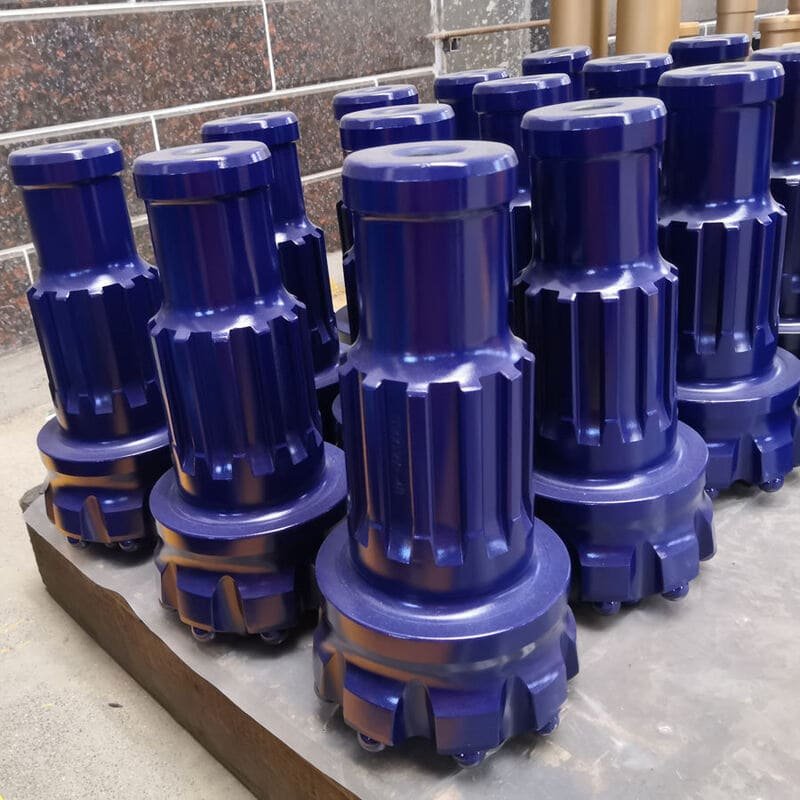Ever had that moment where your drill just doesn’t seem to cut it anymore? Let’s talk about how often you should be swapping out those essential tools!
The frequency of replacing your drill bits depends on several factors, including the material and type of bit, the application environment, and maintenance habits. Regular inspection for signs like decreased efficiency and physical damage can help determine replacement needs.
Now that you’ve got a grasp on the basics of when to replace your drill bits, let’s dive deeper into the specifics. Understanding how material, environment, and maintenance play pivotal roles will give you a clearer picture of your drill bits’ longevity.
PDC drill bits have the longest lifespan among all types.True
PDC bits use diamond-enhanced tips, offering exceptional durability in abrasive environments.
What Factors Affect the Lifespan of Drill Bits?
Drill bits are the workhorses of many industries, but what determines how long they last?
Drill bit lifespan is influenced by material composition, usage environment, and maintenance practices. Choosing the right bit for specific tasks, regular inspections, and adhering to manufacturer guidelines are crucial in maximizing drill bit longevity. Consideration of these factors ensures efficiency and cost-effectiveness in drilling operations.
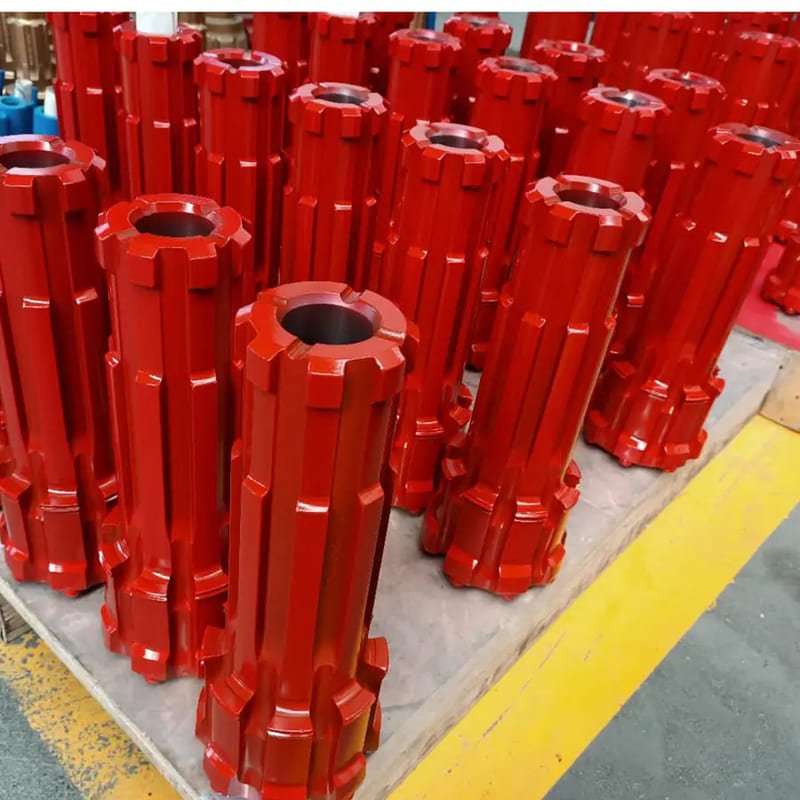
Material Composition
The material from which a drill bit is made significantly impacts its durability.
-
PDC (Polycrystalline Diamond Compact) Bits: Known for their robust performance in soft to medium-hard rock formations, these bits boast a longer lifespan due to their diamond-enhanced tips. However, they come with a higher price tag, making their longevity crucial for cost-effectiveness.
-
Tricone Bits: These versatile tools are suitable for various rock hardness levels. The harder the rock, the more frequently these bits need replacement or re-tipping. Their adaptability makes them a popular choice in both mining and construction.
-
DTH (Down-The-Hole) Bits: Designed for high-impact environments like mining, these bits often face harsh conditions, resulting in a shorter lifespan compared to other types.
-
HSS (High-Speed Steel) Bits: Common in general construction and woodworking, they are economical but require more frequent replacement in industrial settings.
Usage Environment
The conditions under which a drill bit operates also dictate its durability.
-
Mining and Quarrying: The abrasive nature of materials in these industries necessitates frequent bit replacement.
-
Oil and Gas Drilling: Here, PDC bits may last longer per foot drilled thanks to advanced technologies tailored for these demanding environments.
-
Construction: When used within their capacity limits, HSS bits can endure longer durations, especially with proper handling.
Maintenance Practices
Regular maintenance can prolong drill bit life significantly.
-
Proper Usage: Following manufacturer guidelines on drilling speed, pressure application, and lubrication can prevent premature wear.
-
Inspection and Replacement: Regularly checking for signs of wear such as decreased efficiency or physical damage ensures timely replacement, preventing operational delays.
By understanding these factors, you can select the most appropriate drill bits for your needs and ensure they last as long as possible. For more information on choosing the right bit for your application, explore our guide on selecting drill bits1.
PDC bits last longer in oil drilling than DTH bits.True
PDC bits are designed for durability in oil and gas environments.
HSS bits are more durable than PDC bits in mining.False
HSS bits wear faster; PDC is superior in harsh conditions.
How Do Different Materials Influence Drill Bit Longevity?
From high-speed steel to diamond-tipped tools, the material composition of drill bits dramatically affects their lifespan and performance.
The longevity of drill bits is primarily determined by their material composition and usage conditions. Different materials, like high-speed steel, tungsten carbide, and diamond, offer varying durability and performance in specific applications, impacting how often they need replacement.
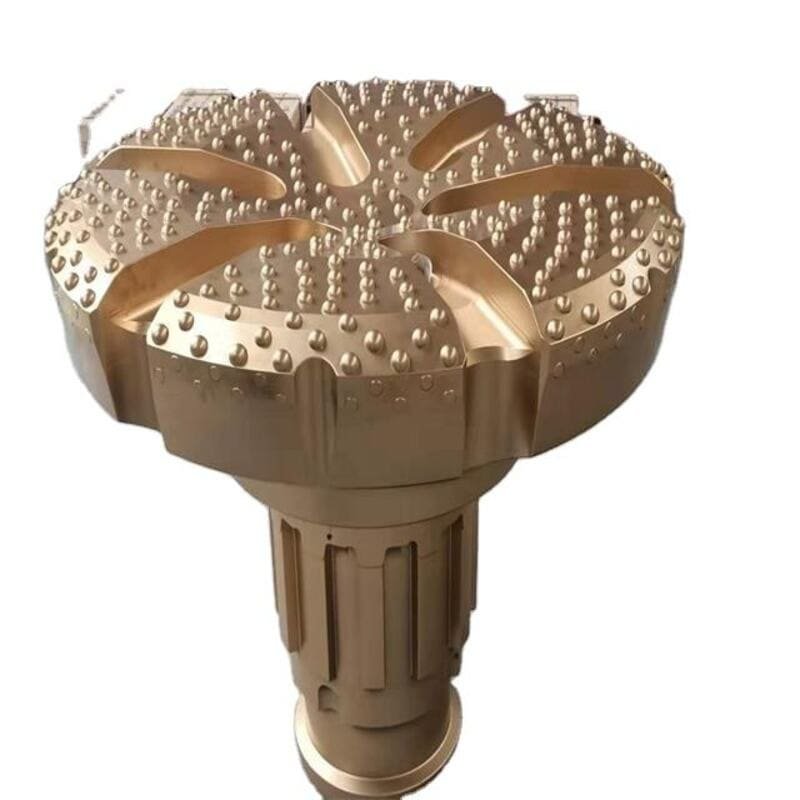
The Role of Material in Drill Bit Longevity
The choice of material in drill bit manufacturing significantly influences how long a bit will last before it requires replacement. Here's a breakdown of some common materials used in drill bits and their typical longevity:
High-Speed Steel (HSS)
HSS bits are widely used for general-purpose drilling in wood and metals. They are relatively inexpensive and offer decent durability for home and light industrial use. However, they wear out faster in heavy-duty industrial applications.
- Pros: Cost-effective, versatile for various materials
- Cons: Less durable under high-speed or high-temperature conditions
Tungsten Carbide
Carbide bits are an excellent choice for drilling hard materials like metals and concrete. These bits boast superior hardness, resulting in a longer lifespan compared to HSS bits.
- Pros: High wear resistance, maintains sharpness longer
- Cons: More brittle, expensive than HSS bits
Diamond-Tipped Bits
Used predominantly in the mining, oil, and gas industries, diamond-tipped bits such as PDC (Polycrystalline Diamond Compact) bits2 are designed to endure extreme conditions.
- Pros: Exceptional durability in abrasive environments
- Cons: High initial cost, specialized usage
Comparing Drill Bit Longevity by Material Type
| Material | Typical Lifespan | Ideal Use Case |
|---|---|---|
| High-Speed Steel | Short to Medium | General construction and woodworking |
| Tungsten Carbide | Medium to Long | Metalworking and heavy-duty tasks |
| Diamond-Tipped | Long | Mining, oil and gas drilling |
Influences Beyond Material
While the material itself is crucial, other factors such as the application environment and maintenance practices can also impact drill bit longevity. For instance:
- Application Environment: Bits used in abrasive environments such as mining may experience faster wear despite being made of durable materials.
- Maintenance Practices: Proper care, including using the correct speeds and adequate lubrication, can extend the lifespan of drill bits significantly.
In conclusion, understanding the characteristics of different drill bit materials can guide you in choosing the right tool for your specific needs and optimize replacement intervals.
High-speed steel bits last longer in heavy-duty tasks.False
HSS bits wear out faster in heavy-duty applications.
Diamond-tipped bits are ideal for abrasive environments.True
They offer exceptional durability in such conditions.
What Are the Signs That Your Drill Bit Needs Replacing?
Is your drill taking longer to work its magic? It might be time for a new bit.
Signs your drill bit needs replacing include decreased efficiency, visible damage, and excessive heat production. Regular inspection helps maintain optimal performance and safety.
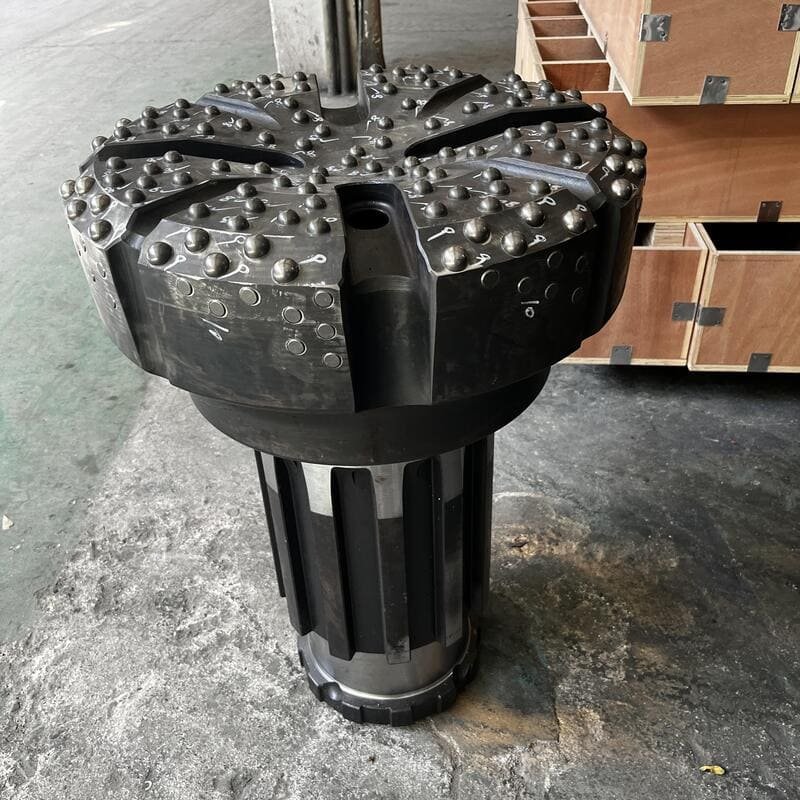
Decreased Efficiency: A Telltale Sign
One of the most immediate signs that your drill bit might need replacing is decreased efficiency. If you notice that drilling through materials takes longer than usual or requires more pressure, it's likely that the bit is dull. This is common with HSS bits3 used in construction. Regularly checking for this can save time and effort.
Physical Damage: Chips and Cracks
Inspect your drill bits for any visible physical damage. Look for chips, cracks, or broken tips, especially on the cutting edges. This type of damage not only reduces effectiveness but can also be dangerous if the bit shatters during use. PDC bits4 used in oil and gas sectors are designed to withstand harsh conditions but can still suffer from wear and tear.
Excessive Heat Production
If your drill bit is overheating, indicated by discoloration or even smoke, it might be time for a replacement. Overheating can compromise the integrity of the bit, leading to a potential failure during operation. Ensure you are using adequate lubrication and proper speed settings to mitigate this issue.
Regular Inspections and Maintenance
Implementing a routine check can significantly enhance the lifespan of your drill bits. Always ensure that they are cleaned after use and stored correctly to avoid unnecessary damage. DTH bits5 particularly benefit from this practice in mining environments.
Conclusion
Recognizing these signs early can prevent further damage to your equipment and ensure your projects run smoothly. Understanding how different factors contribute to drill bit wear will guide you in timely replacements.
A dull drill bit increases drilling time.True
A dull bit requires more effort and time, indicating reduced efficiency.
Overheating drill bits are safe to use.False
Overheating weakens the bit, risking failure and safety hazards.
How Can Proper Maintenance Extend Drill Bit Life?
Ensuring the longevity of your drill bits can save both time and money. Dive into maintenance strategies that extend their lifespan.
Proper maintenance extends drill bit life by preventing wear and damage. This includes regular cleaning, correct storage, using the right speed and pressure, and ensuring proper lubrication. By adhering to manufacturer guidelines, you can maximize the efficiency and longevity of your drill bits.
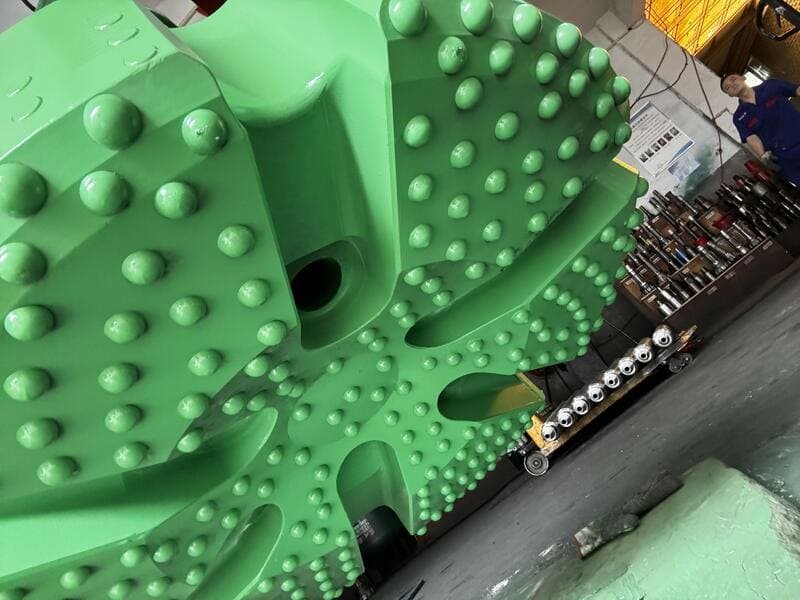
Regular Cleaning and Inspection
Keeping drill bits clean is vital for maintaining their performance. After each use, wipe them down to remove debris and dirt. Periodic inspection for signs of wear or damage, such as chips or dull edges, can help identify issues early. This proactive approach minimizes the risk of damage during use.
Correct Storage Practices
Storing drill bits properly prevents unnecessary damage. Use a dedicated case or organizer to keep them separated and protected from moisture, which can lead to rust. Ensure the storage environment is dry and stable to avoid any potential material degradation over time.
Using Appropriate Drilling Speed and Pressure
Applying the correct speed and pressure when drilling is crucial. Over-speeding can cause overheating, while excessive pressure can lead to breakage. Adjust settings based on the material being drilled; softer materials typically require less speed and pressure compared to harder ones.
Adequate Lubrication
Lubrication reduces friction and heat during drilling operations. This is particularly important when working with metal or other dense materials. Regularly applying a suitable lubricant can significantly reduce wear and tear on the bit, extending its operational life.
Adhering to Manufacturer Guidelines
Following manufacturer instructions ensures optimal performance and longevity. These guidelines often provide specific recommendations on usage, maintenance, and replacement intervals for various types of drill bits, such as PDC bits6 or HSS bits7.
Regular cleaning prevents drill bit wear.True
Cleaning removes debris, reducing friction and preventing damage.
Over-speeding drill bits can cause overheating.True
Excessive speed increases heat, risking drill bit damage.
Conclusion
Recognizing when to replace drill bits not only extends their life but also enhances performance. Regular maintenance and timely replacements are essential for efficient drilling.
-
Find the best drill bit for your specific application needs.: “You want to pick a drill bit that's the size of the central column, not the spiral.” ↩
-
Learn about the unique advantages of PDC drill bits.: PDC bits drill a little differently than tri-cones. The cutting structure is a thin wafer of synthetic diamond bonded to a stout shoulder. In ... ↩
-
Learn how reduced efficiency signals the need for replacement.: A worn-out drill bit may show signs of dullness, reduced performance, or difficulty in drilling. To fix a drill bit, you can sharpen it using a ... ↩
-
Find out how to identify damaging wear on PDC bits.: The main characteristics of most PDC bit damage are the fracture of the tooth column, the fragmentation of the composite sheet, the chipping, erosion, and the ... ↩
-
Discover maintenance tips for extending DTH bit life.: 1) Replace all O-rings, check valve seals and springs inside the DTH Hammer. This ensures that the downhole impactor reduces air consumption. ↩
-
Explore detailed maintenance tips for enhancing PDC bit performance.: Maintain full flow as bit is raised off bottom. · Return to bottom with 50% of the target drilling rotary speed and full flow rate to wash and clean the hole. ↩
-
Discover best practices for maintaining your HSS drill bits.: To inspect your drill bits, start by removing the bit from the drill while following safety guidelines. Visually inspect the cutting edges and ... ↩

